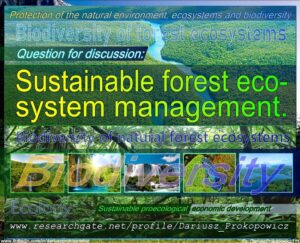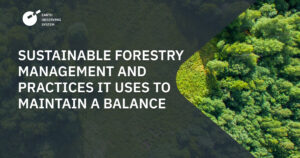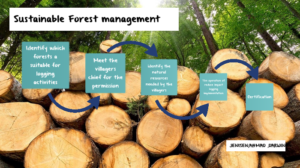In the face of escalating environmental challenges and the increasing need for sustainable practices, innovative forest management techniques are becoming more crucial than ever. As we advance into 2024, the focus on adopting and implementing modern, effective, and sustainable forest management practices is paramount. This article explores the latest techniques in forest management designed to ensure the health, productivity, and sustainability of forest ecosystems.
Understanding Forest Management
Forest management is the practice of maintaining and managing forest ecosystems to meet diverse needs such as timber production, biodiversity conservation, and recreation. Traditional methods focused primarily on timber harvesting and land clearing, but contemporary approaches now emphasize sustainability, ecological balance, and resilience.
1. Precision Forestry
Precision forestry utilizes advanced technologies to optimize forest management practices. By employing Geographic Information Systems (GIS), remote sensing, and drones, foresters can gather detailed data on forest conditions, tree health, and growth patterns. This information allows for more precise planning and decision-making, enhancing efficiency and reducing waste.
Key Benefits:
- Enhanced Data Accuracy: Real-time data helps in accurate monitoring of forest conditions.
- Efficient Resource Allocation: Optimizes the use of resources such as water, nutrients, and fertilizers.
- Reduced Environmental Impact: Minimizes disturbances by targeting specific areas for intervention.
2. Agroforestry
Agroforestry integrates trees and shrubs into agricultural landscapes, creating a symbiotic relationship between forestry and farming. This approach not only enhances biodiversity but also improves soil health and increases crop yields.
Key Benefits:
- Biodiversity Enhancement: Promotes a diverse ecosystem that supports various plant and animal species.
- Soil Fertility Improvement: Trees contribute organic matter and nutrients to the soil.
- Economic Diversification: Provides additional income sources through the sale of timber, fruits, nuts, and other products.
3. Continuous Cover Forestry (CCF)
Continuous Cover Forestry is a sustainable method that focuses on maintaining a permanent forest cover. Unlike clear-cutting, which removes entire stands of trees, CCF involves selective harvesting and natural regeneration.
Key Benefits:
- Ecosystem Stability: Preserves habitat and protects soil and water resources.
- Improved Forest Resilience: Enhances the forest’s ability to withstand pests, diseases, and climate change.
- Sustainable Timber Production: Allows for periodic harvesting without depleting the forest.
4. Forest Certification
Forest certification programs, such as those offered by the Forest Stewardship Council (FSC) and the Program for the Endorsement of Forest Certification (PEFC), ensure that forest management practices meet rigorous environmental, social, and economic standards.
Key Benefits:
- Market Access: Certified products often command higher prices and access to premium markets.
- Environmental Protection: Ensures adherence to sustainable management practices.
- Social Responsibility: Promotes fair labor practices and community engagement.
5. Climate-Smart Forestry
Climate-Smart Forestry aims to mitigate climate change impacts by enhancing forest resilience and carbon sequestration. This involves practices such as planting climate-resilient tree species, managing forest fires, and reducing greenhouse gas emissions.
Key Benefits:
- Carbon Sequestration: Forests act as carbon sinks, absorbing CO2 from the atmosphere.
- Increased Resilience: Adaptation strategies help forests cope with changing climate conditions.
- Enhanced Ecosystem Services: Supports water regulation, soil protection, and biodiversity.
6. Reforestation and Afforestation
Reforestation involves replanting trees in deforested areas, while afforestation refers to establishing forests in previously non-forested areas. Both practices are critical for restoring degraded lands and enhancing ecological balance.
Key Benefits:
- Ecosystem Restoration: Rebuilds habitats and promotes biodiversity.
- Soil Conservation: Reduces erosion and improves soil quality.
- Climate Mitigation: Increases carbon storage and mitigates climate change effects.
7. Community-Based Forest Management (CBFM)
Community-Based Forest Management involves local communities in the planning and management of forest resources. This approach ensures that forest management aligns with local needs and priorities.
Key Benefits:
- Local Empowerment: Enhances the capacity of local communities to manage and protect forests.
- Sustainable Practices: Encourages practices that balance ecological health with community needs.
- Conflict Resolution: Reduces conflicts between stakeholders by involving local voices in decision-making.
8. Forest Health Monitoring
Regular monitoring of forest health is essential for detecting and managing threats such as pests, diseases, and invasive species. Advanced monitoring techniques, including satellite imagery and remote sensing, provide valuable insights into forest conditions.
Key Benefits:
- Early Detection: Identifies potential threats before they escalate.
- Informed Decision-Making: Enables targeted management interventions.
- Improved Resilience: Helps forests recover more quickly from disturbances.
Conclusion
As we move forward into 2024, innovative forest management techniques are crucial for promoting sustainability and resilience in forest ecosystems. By embracing precision forestry, agroforestry, continuous cover forestry, certification programs, climate-smart practices, reforestation, community-based management, and advanced health monitoring, we can ensure the long-term health and productivity of our forests.



